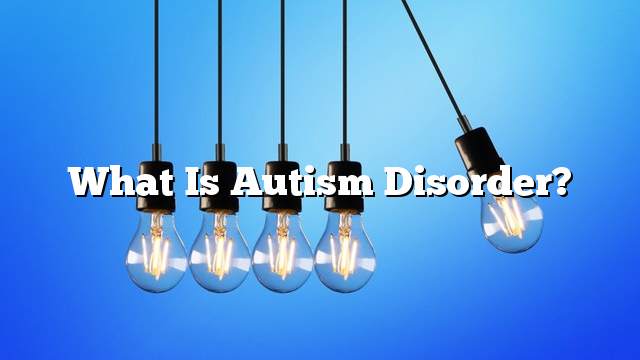Autism is a comprehensive developmental disorder that appears since infancy and is available before the child reaches the age of three. The disease affects the ability of language communication, social communication in children and sensory problems including hearing sensitivity, sensitivity to light, and loss of pain. Early intervention is a treatment that contributes to the development of the child’s abilities, as well as behavioral therapy and the treatment of correctional training. The integration of children with ordinary children is one of the most important means of alleviating the symptoms of this disease. Autism is characterized by a severe inability to communicate with the outside world.
Symptoms of autism
The first symptoms of autism can appear from infancy, and the child’s development can be normal during the first two years, but the language skills do not develop and the child becomes more isolated from the community. These symptoms vary according to the severity of the condition. Autism is diagnosed through the emergence of distinct symptoms in three areas:
Social communication and its most important features
- Weak visual communication.
- The child does not respond when calling in his name.
- He plays alone and can not make friends with his peers.
- Does not show the desire to hug.
- He does not seem interested in talking to him.
Language and pronunciation
- Delayed in the beginning of the formation of words compared to other children.
- The loss of speech he had previously mastered.
- It sounds strange like the sound of a bathroom.
- Repetition of words and inability to use words in their proper place.
- Can not establish dialogue or engage in dialogue.
Behavioral side
- Frequent repetitive movements such as fluttering, turning around, shaking right and left.
- Typical and repetitive in different habits.
- Play wheeled cars.
- Sensory problems include severe sensitivity to sounds, light, and touch but can not feel much pain.
- The autistic child can not refer to the things he is asked to refer to.
the cure
Autism is a chronic disease and there is still no cure for the disease, but can be improved so that the patient becomes close to the natural person and can easily integrate with the community, and the most important treatments that contribute to the alleviation of symptoms:
- Behavioral and behavioral training, including behavioral modification and speech training.
- Drug therapy, including some drugs that help to reduce hyperactivity and hyperactivity in children, the child can respond more to behavioral therapy, and can learn more.
- Follow some diet free of wheat protein and milk protein can help in some cases.
- Follow healthy eating patterns, keeping away from foods that contain colorants and preservatives that increase hyperactivity in children.
